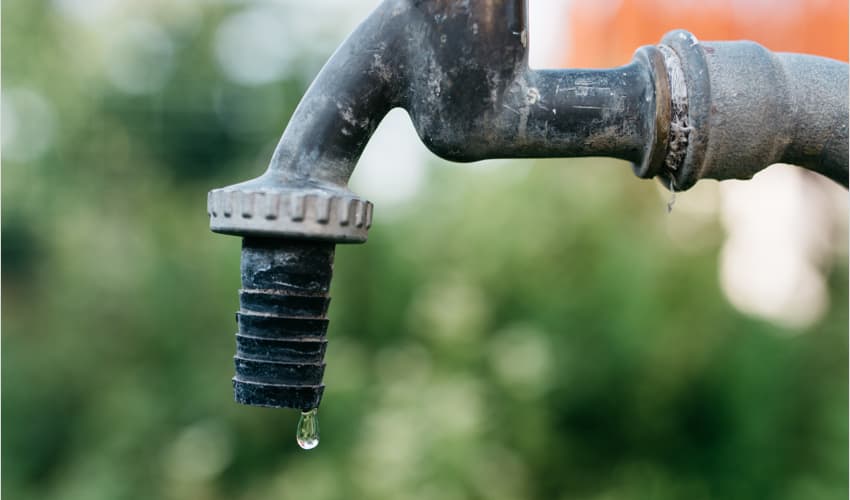Discover The Factors Causing Water Seepage in The House
Discover The Factors Causing Water Seepage in The House
Blog Article
What're your opinions on How to Find Water Leaks?

Leakages not just create waste of water yet can additionally cause unnecessary damages to your residence as well as promote undesirable natural development. By recognizing as well as looking for everyday situations that create leakages, you can secure your home from future leaks and unneeded damages.
Trespassing origins
Most water leakages begin outside the residence instead than inside it. You may notice damp spots or sinkholes in your backyard, and also that could suggest that tree roots are attacking water lines causing water to permeate out.
Corroded water supply
As time goes by, your plumbing system ages as well as deterioration such as corrosion may start eating away the pipes. This may be the source of staining or bending on your pipes. This requires an inspection with your plumber immediately. Take into consideration changing the pipes because they are at a higher risk of deterioration than the newer versions if our plumbing system is old.
Malfunctioning Pipe Joints
Pipe joints can degrade over time, resulting in water leaks. If you have loud pipelines that make ticking or banging noises, particularly when the warm water is turned on, your pipeline joints are possibly under a whole lot of stress.
Instant temperature changes.
Severe temperature level modifications in our pipes can trigger them to increase as well as get unexpectedly. This growth and also tightening might create cracks in the pipes, specifically if the temperature level are below freezing.
Poor Water Connectors
At times, a leak can be created by loose hose pipes and pipelines that provide your home appliances. In situation of a water links leakage, you may see water running directly from the supply line or puddles around your appliances.
Clogged Drains
Blocked drains pipes could be irritating as well as inconveniencing, however they can sometimes wind up causing an overflow causing break pipelines. Maintain removing any kind of materials that may go down your drains that could block them to prevent such hassles.
All the above are sources of leakages but not all water leaks arise from plumbing leaks; some leaks could originate from roof leakages. All leakages must be fixed promptly to prevent water damage.
Leakages not just cause waste of water yet can additionally create unnecessary damage to your house as well as promote undesirable natural growth. By recognizing as well as looking for daily scenarios that trigger leaks, you can secure your home from future leakages and also unneeded damage. Today, we will look at six leakage triggers that might be causing your pipelines to trickle.
At times, a leakage can be caused by loosened tubes and also pipes that provide your devices. In case of a water connections leakage, you may notice water running straight from the supply line or pools around your devices.
How To Check For Water Leak In Your Home
How To Check for Leaks
The average household's leaks can account for nearly 10,000 gallons of water wasted every year and ten percent of homes have leaks that waste 90 gallons or more per day. Common types of leaks found in the home are worn toilet flappers, dripping faucets, and other leaking valves. These types of leaks are often easy to fix, requiring only a few tools and hardware that can pay for themselves in water savings. Fixing easily corrected household water leaks can save homeowners about 10 percent on their water bills.
To check for leaks in your home, you first need to determine whether you're wasting water and then identify the source of the leak. Here are some tips for finding leaks:
Take a look at your water usage during a colder month, such as January or February. If a family of four exceeds 12,000 gallons per month, there are serious leaks.
Check your water meter before and after a two-hour period when no water is being used. If the meter changes at all, you probably have a leak.
Identify toilet leaks by placing a drop of food coloring in the toilet tank. If any color shows up in the bowl after 10 minutes, you have a leak. (Be sure to flush immediately after the experiment to avoid staining the tank.)
Examine faucet gaskets and pipe fittings for any water on the outside of the pipe to check for surface leaks.
Undetected water leaks can happen without the home or business owner even realizing. If you suspect a water leak, but not able to find the source. It is time to contact a professional water leak detection service, The Leak Doctor.
How To Find a Water Leak In Your Home
https://www.leakdoctor.com/blog/How-To-Check-For-Water-Leak-In-Your-Home_AE197.html

I'm certainly very intrigued by Common Water Leaks In House and I'm hoping you enjoyed the entire piece. Sharing is good. Helping others is fun. I am grateful for your time. Visit again soon.
We're ready, are you? Report this page